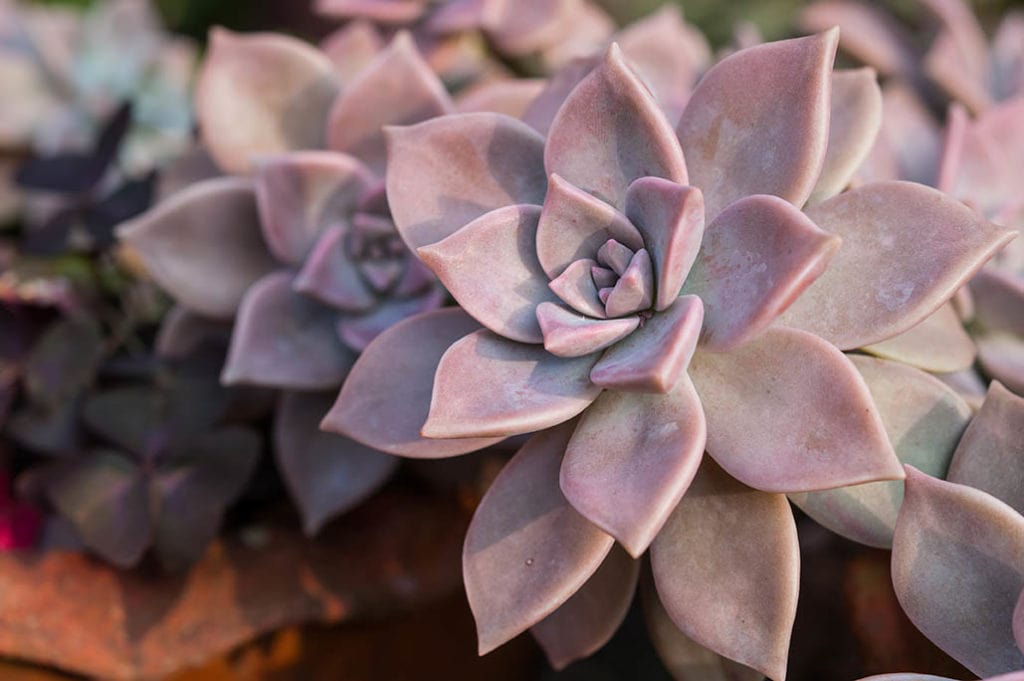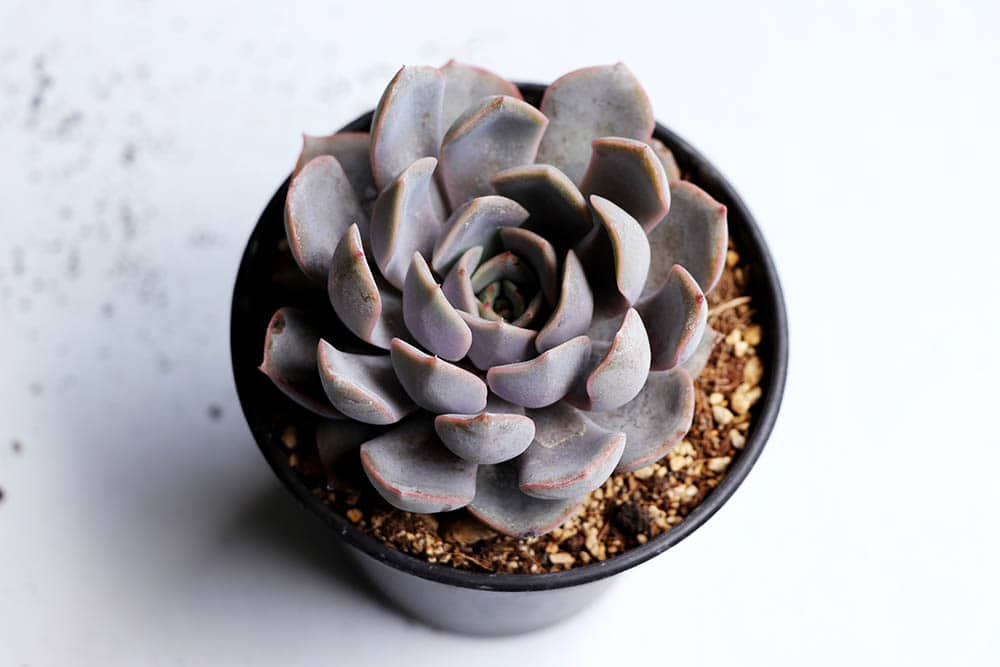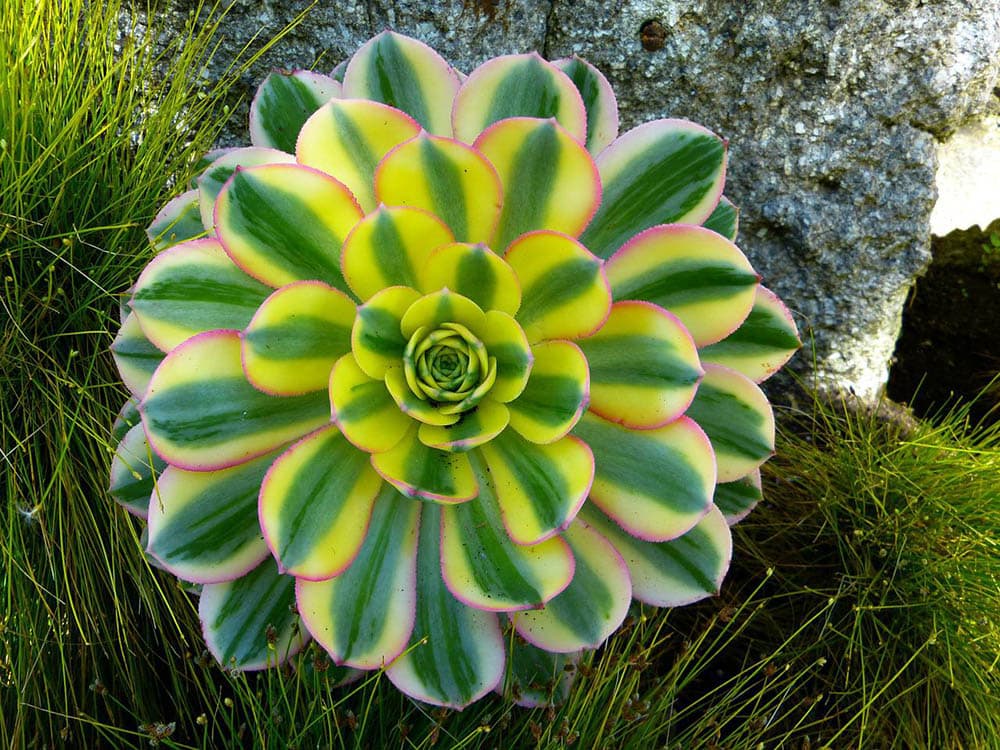How to Grow Succulents Indoors: 7 Tips & Tricks
-

- Last updated:

Beautiful succulents add a touch of nature and life to any room in your home. Many people, however, do not have the space to grow succulents outdoors. There is hope for those who love them since many succulent varieties grow well indoors. Below you’ll find 7 helpful tips, tricks, and advice for growing these unique plants indoors.

Step-By-Step Instructions for Growing Succulents Indoors
1. Choose Your Succulents Carefully
Succulents live in hot, dry climates. Most succulents need direct sunlight for at least a few hours every day, although a few varieties are okay with low light. Some succulents do better when hung in a planter, and some will spread and cover the entire area in their pot. The point is: make sure you know what type of succulents you’re buying so you can provide the correct environment for them to thrive.
- Advice: If you have pets, make sure your succulents are secure. Pets, especially curious cats and canines, can damage the plants when they can knock them off a shelf, windowsill, or table.To prevent a plant catastrophe, ensure your succulents are secured in place or out of reach of hyper animals.

2. Succulents Like a Lot of Air Flow
Air circulation is essential for healthy succulents. Without it, pests like mealybugs and spider mites can damage them. Place your succulents where they will get plenty of fresh air every day, such as near a window or entrance.
- Trick: If your succulents are infested with bugs, separate the affected plants from the healthy ones to reduce the spread of any infestation
3. Use Pots with Drainage Holes
Succulents survive in very hot, dry places because they don’t need a lot of water (they store it in their thick leaves). If you overwater succulents, their leaves will begin to wrinkle, turn brown (rot) and fall off. To avoid that, use pots with holes in the bottom so extra water can drain.
- Advice: Avoid overwatering your succulents. Succulents can go several weeks without being watered. Since most houseplants need their soil to be perpetually moist, you’ll need to adapt to a new method for watering succulents.
An easy way to know the plant is moist enough is to feel the soil in the pot with your finger. If it’s bone dry and crumbles to the touch, you can drench the pot with water.
Then, let the soil become bone dry again (it will take a few days or weeks). Repeat this pattern of letting the soil get dry and soaking it, and your succulents will always have the correct amount of water to live long, healthy lives.

4. Place Your Succulents where they Receive the Most Sunlight
Placing most succulents where they get at least 10 hours of sunlight per day is critical. Remember, succulents thrive in places like the Mojave and the Sonoran Desert, where they get sunlight from dawn until dusk. They might not need a lot of water, but your average succulent needs a ton of sunshine to stay healthy.
- Advice: Succulents are truly low-maintenance plants, so you don’t need to fuss with them like many other plants. Check the soil, water the plants when they get dry, and fertilize them twice a year.
- Trick: Rotate your succulents. Even if they get sufficient sunshine, the plants might not get enough sun on all sides. To avoid this, rotate them every few weeks so that all sides get the light they need.
Rotating is especially important if you find your succulents are leaning to one side (a sign they need more sun)!
5. How To Tell If your Succulent Needs More Sunlight
Knowing that succulents need a lot of sunlight, one question many have is how to tell if they aren’t getting enough? One easy way to tell is when your succulent starts to grow tall and thin and leans to one side. If that’s happening, it’s usually because the plant is trying to get more sunlight.
- Trick: Use a paintbrush to clean the leaves on your succulents. Depending on where you live, dust and dirt might be a problem. Both can stop your succulent from growing well, so it’s best to clean succulent leaves gently with a damp cloth every few months.

6. Use a Well-Draining Soil Mix for Succulents
Even if you water your succulents correctly, the roots can still rot if water doesn’t drain out of the soil. For that reason, it’s best to use well-draining soil. There are pre-packaged succulent soil mixes you can purchase, or you can make your own.
- Trick: Add perlite or large-grain sand to regular potting soil for the perfect succulent soil that drains well.
- Advice: Does your interior have inadequate Light? Use a grow light for your succulents. Depending on where you live, your home or apartment might not get the sunlight a succulent needs to thrive.
In that case, purchasing a grow light and hanging it above your succulents is a good option. Plant experts recommend a T-5 grow light for best results.
7. Fertilize your Succulents in Spring and Summer
Succulents grow slower than many other houseplants and thus need less fertilizer. The best time to fertilize them is in spring and fall.
- Trick: Spread the roots of your succulent to help them grow faster. Most succulents develop with their roots wound tight under the soil, which inhibits their growth naturally. If you want yours to grow quickly, spreading open the roots will help.
To do so, gently remove the succulent from its pot and turn it over in your hand. Then, gently shake some soil loose and gently massage the roots with your fingers. When you place the plant back in the pot, spread the roots one last time with your fingers.


Conclusion
Although several succulent varieties are native to tropical and sub-tropical regions, you do not have to keep the plants outdoors. Compared to other houseplants, succulents require less water and care to develop properly. As long as you provide indirect sunlight, water when the soil dries, and minimal fertilizer, your succulents can thrive for several years.
- https://www.hgtv.com/outdoors/gardens/planting-and-maintenance/how-often-do-water-succulents#:~:text=The%20most%20important%20rule%20for,soil%20moist%20at%20all%20times.
- https://plantcareforbeginners.com/articles/how-to-care-for-succulent-indoors
- https://debraleebaldwin.com/keep-succulents-happy-indoors/
- https://gilmour.com/growing-succulents-indoors#:~:text=Most%20succulents%20prefer%20at%20least,to%20dry%20out%20between%20waterings.
- https://www.architecturaldigest.com/story/how-to-care-for-succulents
- https://unusualseeds.net/5-tips-on-making-your-succulents-grow-faster/
Featured Image Credit: TuJardínDesdeCero, Pixabay
Contents
